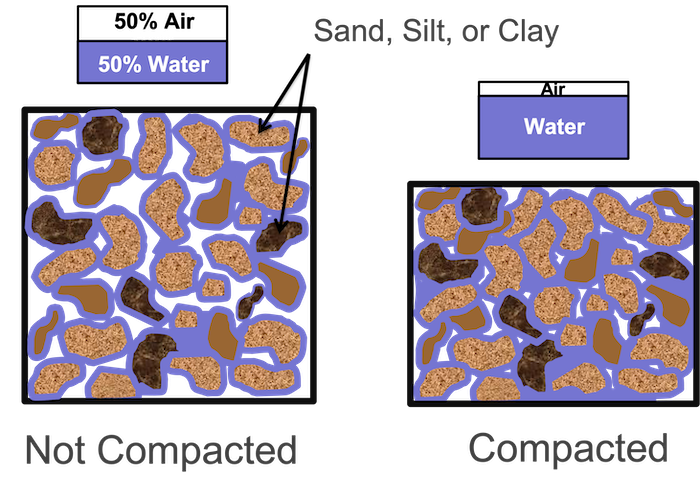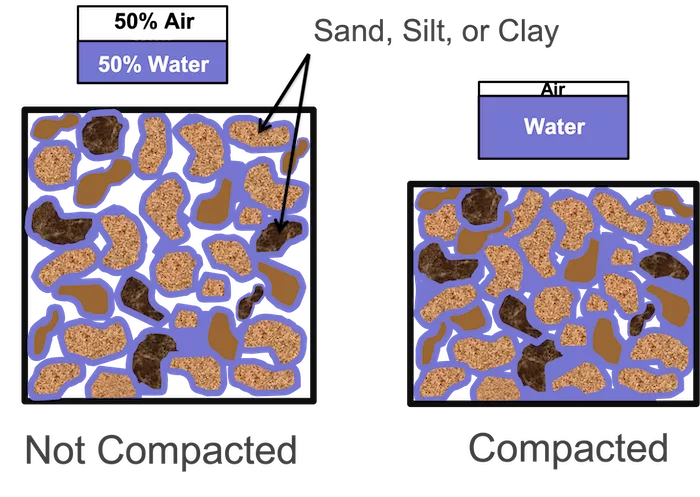Kids sometimes call Jodi DeJong-Hughes the “dirt lady,” a job description the longtime University of Minnesota Extension educator considers not quite accurate.
“I’m not the ‘dirt lady’ — I’m the ‘soil lady,’” she says.
DeJong-Hughes has been in the soil business for more than two decades. A regional educator for the University of Minnesota Extension based in west-central Minnesota, she helps farmers improve soil health by minimizing soil compaction and improving tillage systems.
Soil compaction can be simply defined as the reduction of pore space in the soil. Types of compaction include wheel traffic compaction, tillage pan and surface crusting, notes DeJong-Hughes.
“If you have an ideal soil, you'll have 50% sand, silt, clay and organic matter, and 50% pore space,” she says. “Half of that pore space will be filled with water, and half will be filled with air.”
Healthy soil is made up of soil aggregates, which act like columns to hold up the weight of equipment traveling across the surface.
But it doesn’t always work that way, and “compaction happens,” DeJong-Hughes says. Less pore space means less air movement through the soil, so compacted soil tends to be cooler and wetter. In contrast, stronger soil with more aggregates can handle excess moisture better than soil with fewer aggregates.

PORE SIZE. In this diagram, soil particles (brown) are surrounded by water (blue) and pores (white space) in the non-compacted soil (left). As illustrated, pore size significantly decreases in the compacted soil. Image courtesy Jodi DeJong-Hughes
Compaction Causes
Perhaps the most significant contributor to compaction is the increase in axle load over time, says DeJong-Hughes.
She points to 2019 research showing an increase in combine front wheel load from an average of 2 tons per axle in 1960 to close to 9 tons per axle around 2010. The same research found an increase in tractor rear wheel load from an average of 1 ton per axle in 1950 to around 4 tons per axle by 2010. The corresponding average depth in compaction has gone from 8 inches to 32 inches.
“We are pushing compaction past where we can realistically do any tillage to break it up,” DeJong-Hughes says.
The effects of compaction depend on whether the field is wet or dry, DeJong-Hughes adds. If it’s dry, strip-tillers can sometimes initially see a yield increase in compacted fields. The reason for the initial bump is compacted soils have less air and more water in the small pores, so little roots can reach the water faster.
But in a wet year, any compaction will have detrimental effects on the crop, including uneven emergence. DeJong-Hughes cites a Wisconsin study that compared the effects of axle loads of 5 tons, 9 tons and 14 tons on corn emergence.
“With only a 5-ton axle load, you have pretty good and very quick emergence, but the more weight that you have out there, the slower the corn is to emerge,” she says. “In compacted soils, it takes a lot longer for those plants to emerge. You get a lot of uneven emergence, and the corn plants that are a growth stage behind the other corn will act like weeds and take nutrients and water from the healthier plants.”
Another effect of compaction is nutrient deficiency. Most nutrients tend to move slowly to roots, so it’s important that plants can send out lots of little roots to explore the soil, DeJong-Hughes explains. But compaction can inhibit the ability of those small roots to explore an area of soil for water and nutrients. Compaction also causes an elevated risk of seedling disease due to excess soil moisture which keeps soil cooler.
Fixing Compaction
Myths persist about soil’s ability to naturally bounce back from compaction.
A common myth, says DeJong-Hughes, is that in northern growing zones, freeze-thaw cycles can correct the effects of compaction by creating natural cracks in the soil surface. This might have been true at one point, when equipment wasn’t very heavy and compaction didn’t go very deep, she says.
“Nowadays we can actually push compaction down 2-3 feet with equipment, and if you have the right conditions, 4 feet,” DeJong-Hughes says. “How many freeze-thaw cycles do you get at 4 feet each year? In Alabama, probably none. Up in Minnesota, we get one, but not every year.”
Most states that do experience freeze-thaw cycles will experience benefits only in the top 2-5 inches of soil. If there’s a lot of snow cover, it might not happen at all.
Soil also needs to be wet for freeze-thaw to break up the surface soil, DeJong-Hughes notes, because the water expanding as it freezes creates the cracks. Dry soils will not experience the same effects.
Wetting and drying cycles will help alleviate soil compaction in northern growing zones. In some areas in the spring and summer months, soil will crack open when dry. Topsoil falls into the cracks, and when the soil gets wet, it seals.
“Most of Minnesota into the Dakotas, Iowa and surrounding regions have cracking soils,” DeJong-Hughes says. “We also have, geologically speaking, young soils in those areas because we had a glacier come through about 11,000 years ago, which kind of reset the clock on all our soil.”
Glaciers brought ancient mineral sediments from the Canadian Shield to these northern states. Soil cracking indicates the presence of a soil mineral called smectite, says DeJong-Hughes. Smectites are expanding clay minerals with shrinking and swelling properties.
“Under wet conditions and when frozen, the clay interlayer spaces expand,” North Dakota State University extension soil specialist D.W. Franzen writes in a 2018 article on the topic. “Under dry and thawed conditions, the interlayer spaces contract and collapse. These shrink-swell processes can break up compacted soil layers.”
Strip-tillers who live farther south may not be able to reap the rewards of these natural cycles, but no matter where compaction happens, yield losses due to compaction can persist for a long time, depending on which soil zones are compacted.
DeJong-Hughes says compaction issues in topsoil can result in steep yield losses that persist for a few years, but compaction in the subsoil can result in, while less severe, yield losses that persist for many years.
“It’s a balancing act,” she says. “You must make the decisions right for you. There's not one right answer for anybody.”
Related Content
[Video] Managing Soil Compaction for Better Strip-Till Outcomes
[Podcast] Managing Compaction & Navigating Carbon Markets with Jodi DeJong-Hughes
20 Tips and Considerations for Building a Strip-Till System






